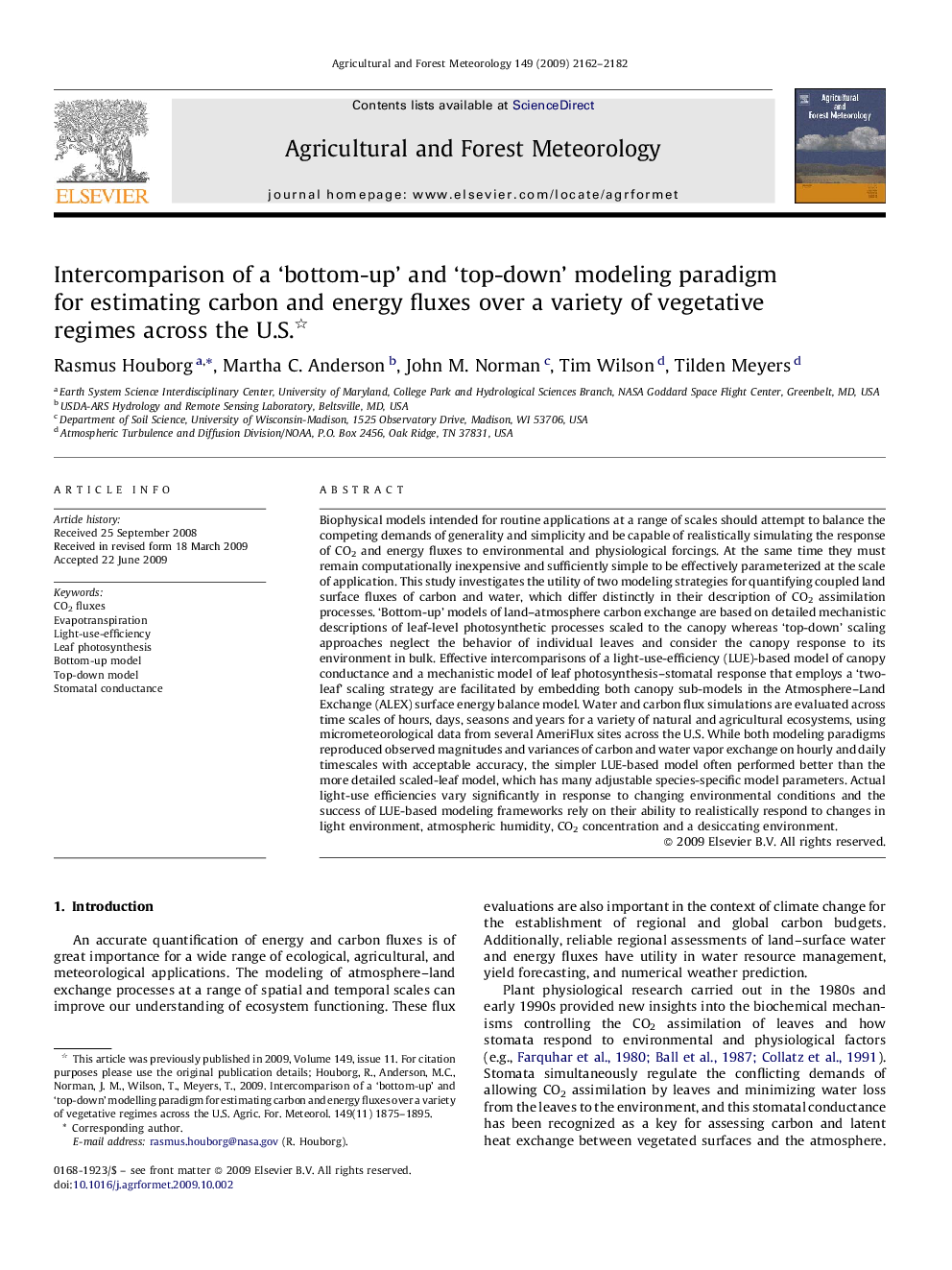| کد مقاله | کد نشریه | سال انتشار | مقاله انگلیسی | نسخه تمام متن |
|---|---|---|---|---|
| 82244 | 158384 | 2009 | 21 صفحه PDF | دانلود رایگان |

Biophysical models intended for routine applications at a range of scales should attempt to balance the competing demands of generality and simplicity and be capable of realistically simulating the response of CO2 and energy fluxes to environmental and physiological forcings. At the same time they must remain computationally inexpensive and sufficiently simple to be effectively parameterized at the scale of application. This study investigates the utility of two modeling strategies for quantifying coupled land surface fluxes of carbon and water, which differ distinctly in their description of CO2 assimilation processes. ‘Bottom-up’ models of land–atmosphere carbon exchange are based on detailed mechanistic descriptions of leaf-level photosynthetic processes scaled to the canopy whereas ‘top-down’ scaling approaches neglect the behavior of individual leaves and consider the canopy response to its environment in bulk. Effective intercomparisons of a light-use-efficiency (LUE)-based model of canopy conductance and a mechanistic model of leaf photosynthesis–stomatal response that employs a ‘two-leaf’ scaling strategy are facilitated by embedding both canopy sub-models in the Atmosphere–Land Exchange (ALEX) surface energy balance model. Water and carbon flux simulations are evaluated across time scales of hours, days, seasons and years for a variety of natural and agricultural ecosystems, using micrometeorological data from several AmeriFlux sites across the U.S. While both modeling paradigms reproduced observed magnitudes and variances of carbon and water vapor exchange on hourly and daily timescales with acceptable accuracy, the simpler LUE-based model often performed better than the more detailed scaled-leaf model, which has many adjustable species-specific model parameters. Actual light-use efficiencies vary significantly in response to changing environmental conditions and the success of LUE-based modeling frameworks rely on their ability to realistically respond to changes in light environment, atmospheric humidity, CO2 concentration and a desiccating environment.
Journal: Agricultural and Forest Meteorology - Volume 149, Issue 12, 4 December 2009, Pages 2162–2182